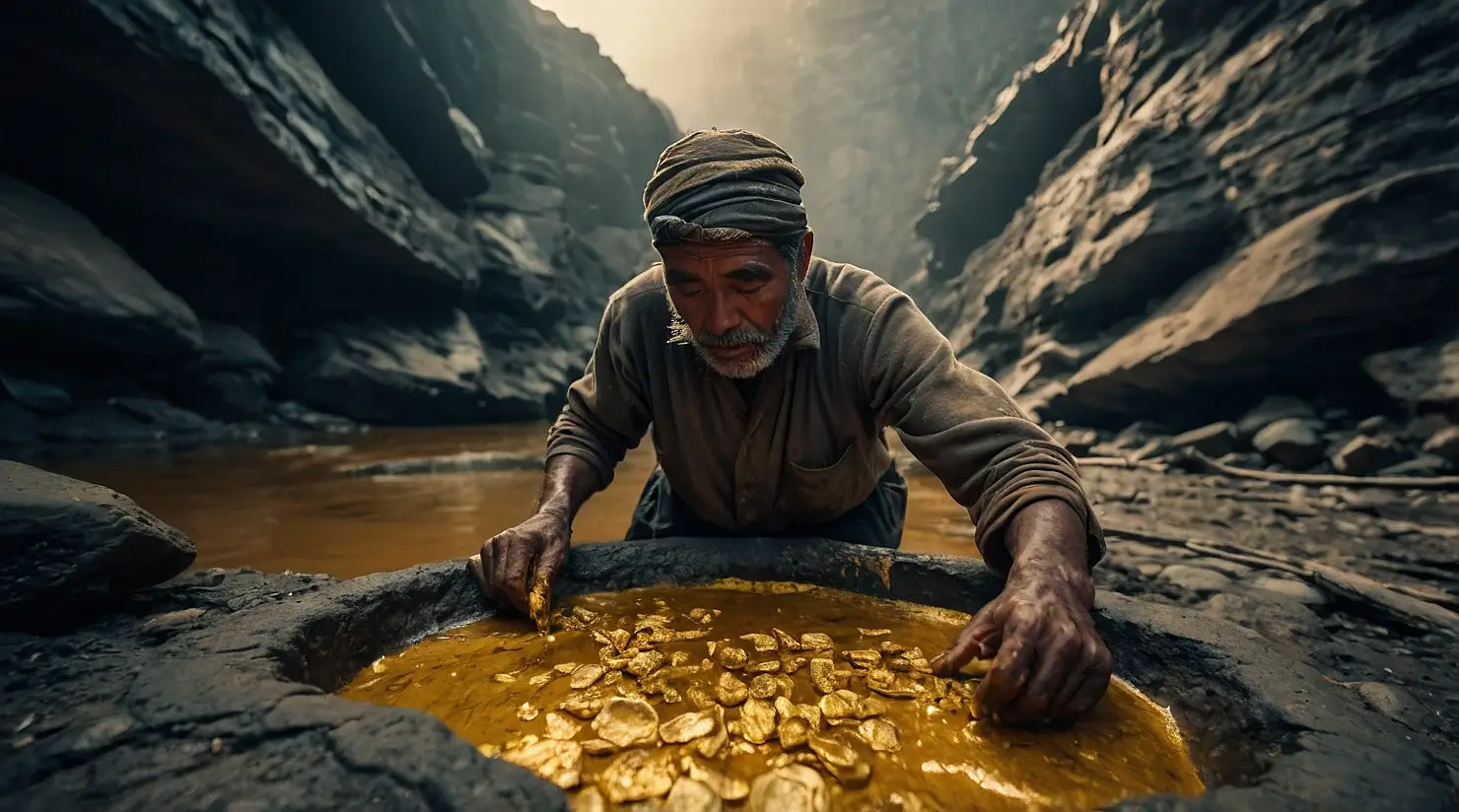People in ancient Africa dug for gold. This was a very important job. It helped many old cultures grow rich and strong.
Quick Summary: Gold Mining in Ancient Africa
- You will learn how people found gold long ago.
- You will see what tools they used.
- You will understand why gold was so important.
- You will find out how these old ways still matter today.
Estimated reading time: 5 minutes
Have you ever seen gold? It’s shiny and valuable. Long, long ago, people in Africa found lots of it. This work changed their lives and their world.
How They Found Gold Long Ago
People started looking for gold a very long time ago. Some of the first gold mining happened around 4000 years before the time of Jesus. In Africa, people found gold in many places, like West Africa and a place called Nubia.

Early miners used simple ways to get the gold. One common way was called gold panning. They would wash dirt and rocks in a pan. This helped them find small gold pieces. This worked well in rivers where gold washed down. You can learn more about early gold mining techniques.
- Think Simple: Forget big machines. Picture people using hands, sticks, and pans by a river.
- Imagine the Heat: Mining was hard work under the hot African sun or deep underground.
- See the Trade: Picture long lines of camels carrying gold across the desert to distant lands.
- Feel the Value: Understand gold wasn’t just metal; it was power, beauty, and connected to beliefs.
Gold Mining in West Africa
West Africa had much gold. It became a big center for trading gold a long time ago. The desert was like a highway for traders.

People in West Africa first used gold for pretty things. But they saw that Arab traders wanted it for money. So, gold became very important for their economy. They used gold as money and for beautiful jewelry. The gold trade of ancient & medieval West Africa was huge.
One group, the Tadmekka people, were very smart. They had a special way to clean gold. They made it very pure without using mercury. This was a very advanced method for that time. A study showed this old way of cleaning gold really worked.
Buy Gold Online: The Smart and Secure Way
Discover the safest and most reliable strategies to buy gold online. Make informed investment decisions and secure your financial future today!
Learn MoreGold in Nubia and Egypt
Nubia also had gold long ago. People found gold pieces there even before recorded history. They used panning and also dug tunnels underground. They dug deep to find gold in rocks.

When Egypt took control of Nubia, they mined even more gold. This happened a lot during a time called the New Kingdom. The Egyptians brought new tools, like special grinding stones.
In Egypt, gold was like a symbol of the sun god. It showed the king’s power. Egyptians put lots of gold in tombs and on religious items. Gold was not just for show. It was also used like money and showed how rich someone was. Gold played a big role in gold mining in ancient Nubia.
Tools and Ways They Mined
Ancient Africans used different ways to get gold. It depended on where they were.
- Panning: Washing dirt in a pan to find gold bits. This was very common.
- Underground Mining: Digging holes and tunnels into the ground. This was harder work.
- Tools: They used simple things like digging sticks with iron on the end. They also used wooden hammers and grinding tools. Later, some people even used gunpowder to break up rocks with gold in them. You can read more about precolonial and contemporary methods of gold mining in Ghana.
How Gold Mining Changed Societies
Finding gold changed life for ancient African people.
- Money and Trade: Gold was valuable. It helped people trade things and become wealthy. Having gold made people important. This boosted gold trade and economy in ancient times.
- Culture: Gold was often linked to kings and gods. It was used in important ceremonies and on religious objects.
- New Ideas: Trying to find gold led to new ways of mining and cleaning gold.
Gold Mining Today
The old ways of finding gold still matter. People in Africa today still use some old methods along with new machines. The skills from long ago help modern miners.
Gold is still important today. It shows wealth and is used for jewelry and money.
Insights on Gold Mining in Ancient Africa
Thinking about this old work shows how smart people were. They found gold with simple tools. They built big trade networks because of it. They even found ways to clean gold very well, which was hard to do back then. This work shaped their history in big ways.
Quick Facts About Ancient African Gold Mining
- Started Early: Gold mining began thousands of years ago.
- Simple Tools: Miners used sticks, hammers, and pans.
- Key Places: West Africa and Nubia were important gold areas.
- Trade Power: Gold helped build rich trading empires.
- Cultural Meaning: Gold was linked to kings and gods.
Conclusion
Gold mining was a key part of life in ancient Africa. People used simple tools and smart methods to find gold. This gold helped their economies, shaped their cultures, and led to new ideas. The old ways still help us understand gold mining today.
Your Questions About Ancient African Gold Mining Answered (Simply)
What tools did ancient Africans use to mine gold?
Where was gold mining common in ancient Africa?
What is gold panning?
Why was gold important in ancient Egypt?
Did ancient Africans dig underground for gold?
How did gold mining affect ancient African societies?
Is ancient African gold mining still relevant today?



